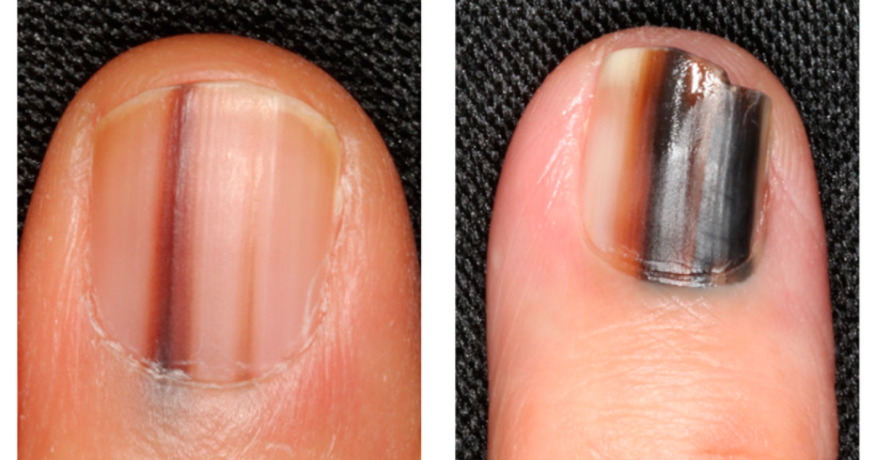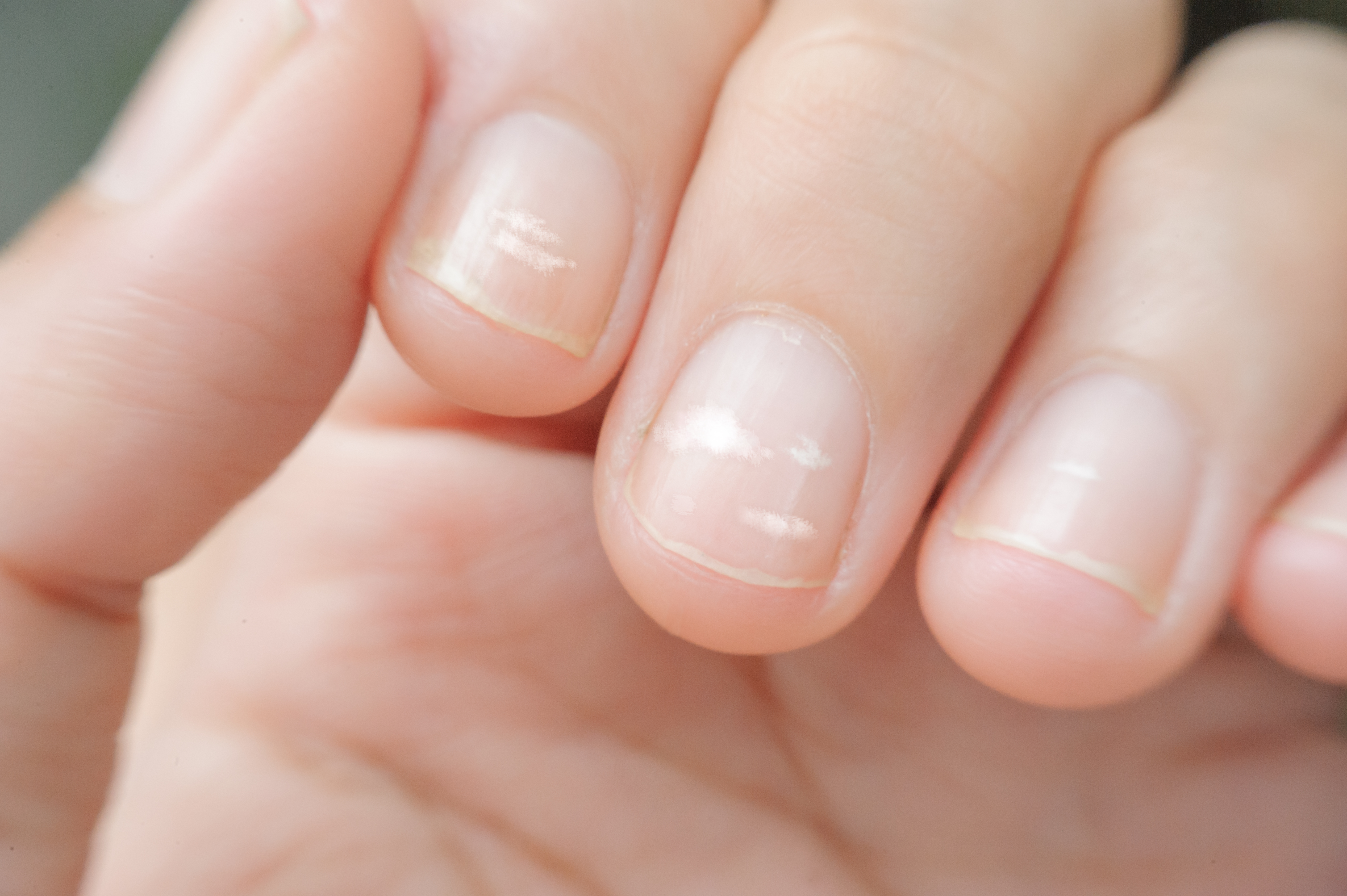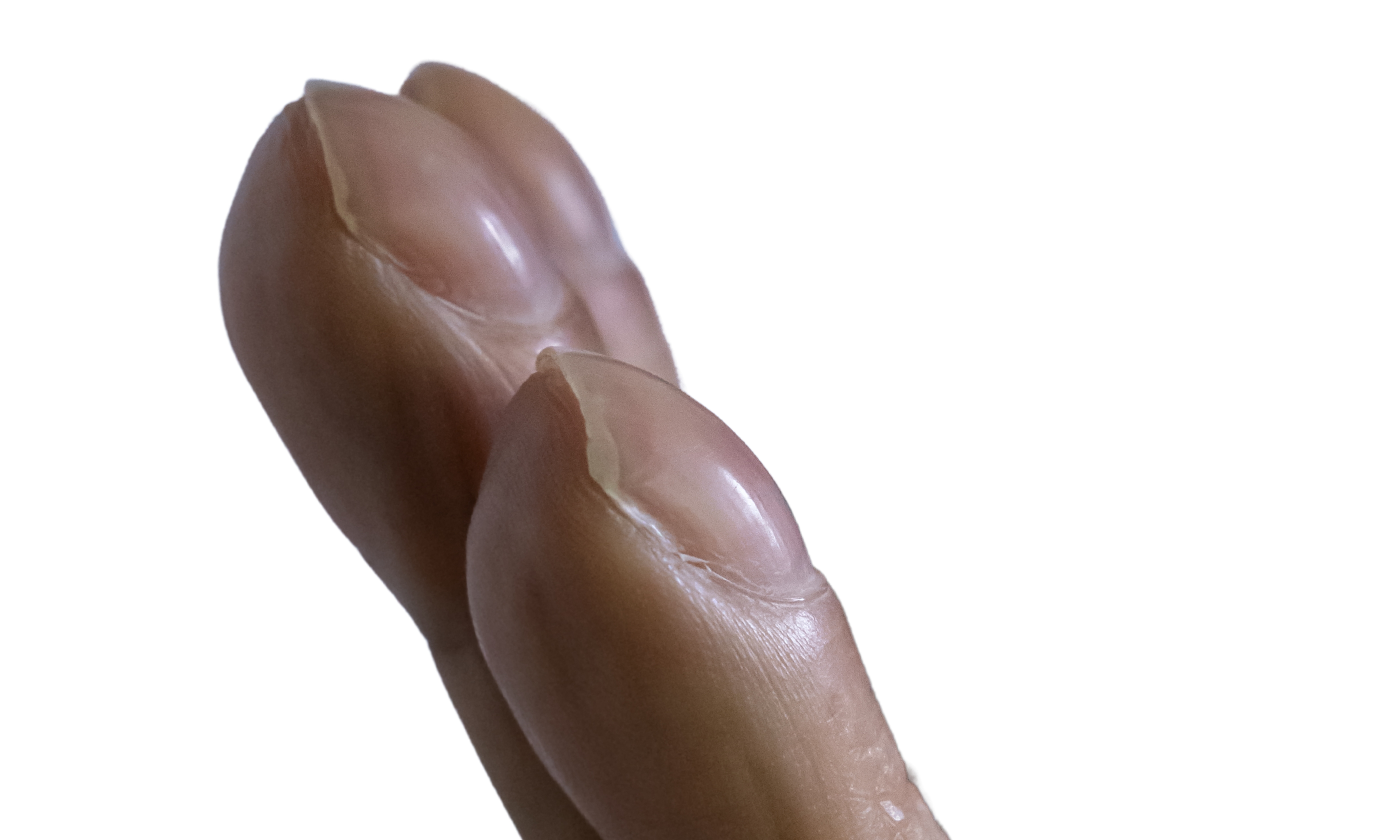It’s easy not to give a second thought to our nails beyond keeping them clean and tidy, but keeping an eye on them can actually be pretty important. Though they only make up a small part of our body, a change to our nails might be an important sign of what’s going on inside.
Growths
Some nail conditions are the result of changes in cell size, or cells growing and dividing to an abnormal extent. Sometimes, this can be harmless – though the appearance might distress some people – but there are also cases where disease can be at play.
Neoplasm
Like any other area of the body, nails can have neoplasm – an abnormal and excessive growth of tissue, which you might have heard of as a tumor. This can be benign, where the cells stay put, or it can be malignant, where the growth continues in an uncontrolled way and can invade nearby tissues.
A case of the latter that can be found in nails is melanoma, a type of skin cancer. This most often appears as a dark brown or black line running from the bottom to the top of a nail and can grow over time, known as melanonychia.

It’s common for melanoma in the nail to start out as a single streak and then widen.
The color of the streak is the result of an overgrowth of melanocytes in the tissue underneath the nail. These cells produce the melanin that gives skin color. In melanoma, this production rises, leading to the dark stripe.
There can also be benign tumors in nails, one of which is a rare condition known as onychopapilloma. It’s usually characterized by dark red-brown streaks, a wart-like growth under the nail, splitting, and lifting at the nail tip.
Though benign, a recent study found that the presence of onychopapilloma might be linked to a rare inherited syndrome, BAP1 tumor predisposition syndrome (TPDS), that can increase the risk of developing cancer. This could make it a useful marker for diagnosis, although further research with larger and more diverse groups of participants would be required before finding its way into the clinic.
Hypertrophy
Nails can also experience hypertrophy, where cells increase in volume. This is what happens in the matrix of the nail (where growth begins) in a condition called onychogryphosis, more commonly known as Ram’s horn nails. This is because of the thick, curved appearance of the nails (there’s a picture in the previous link), which occurs due to the hypertrophy causing uneven growth of the nail.
It can sometimes be an inherited condition, but onychogryphosis can also occur as the result of trauma to the nail, infection, or associated with medical issues such as circulatory problems or psoriasis.
Treatment can range from conservative approaches like using nail clippers and burs to cut down the nail, through to surgical options that involve full nail removal.
Pits and grooves
Though it’s normal for nails to have ridges running vertically, other textures such as tiny dents or grooves running the width of the nail can be a sign of something else going on.
Pitting
Pitted nails are characterized by small, round dents – it almost looks as if a tiny ice pick has been taken to the nail.
These pits can be the result of psoriasis within the nail matrix, which interferes with the formation of the nail. It can also be found in some people with eczema affecting the hands and feet, those with the genetic condition incontinentia pigmenti, or those with the autoimmune condition alopecia areata.
Treatment might vary depending on the cause of the pitting, but in the case of nail psoriasis, some approaches include corticosteroids or vitamin A-derived medications.
Beau’s lines
Deep grooves that run horizontally across the nail are known as Beau’s lines, and are a sign that the nail stopped growing – though it can restart once the cause is identified and dealt with.
Beau’s lines can have an external cause, such as injury of the nail matrix or cuticle (even from something like a manicure), or infection. Growth can also cease as a side effect of chemotherapy, as well as uncontrolled diabetes, illnesses that come with a high fever, and mineral deficiencies.
Color
Yellow
Yellow nails aren’t necessarily something to be concerned about – it can happen when someone doesn’t use a base coat before painting their nails an obnoxiously bright color.
However, if a yellowish color doesn’t go away and is accompanied by nail thickening and growth slowing down, it could be yellow nail syndrome. This is a very rare condition that can sometimes come with symptoms beyond the nails – namely, swollen legs and respiratory problems like coughing and fluid buildup. The exact cause isn’t known, though some scientists think it might involve genetics, or problems with the body’s lymphatic system.
A more common medical reason for yellow nails might be a fungal infection. Such infections typically start off with yellowing at the edge of the nails, which can eventually spread across all of the nail. It’s usually not serious, but the nail can become brittle and the area painful, though antifungal medications can be used to treat it.
White
Despite commonly being known as “milk spots”, those little white spots that sometimes pop up on nails don’t have anything to do with not drinking enough milk, or calcium deficiency.

Leukonychia or milk spots usually happen when nails have been injured in some way.
Image credit: OHishiapply/Shutterstock.com
The medical term for these spots is leukonychia and the most common cause is injury to either the nail itself or the matrix underneath. When this is the case, there’s no treatment as such – it’s simply a case of waiting for the nail to grow out.
However, leukonychia can have other causes. These include fungal infections, allergies (often to nail products), and on rare occasions, diseases such as diabetes, heart failure, and psoriasis. How the cause of the spots is treated will depend on which of these potential causes is responsible.
Curves
Clubbing
Clubbed nails have a characteristic appearance; the nails widen and curve, starting to wrap around the sides of the fingertips. As well as these visible signs, clubbed nails can also feel spongy when they’re pressed upon.

Clubbed nails feature a pronounced curve.
Image credit: IdeaGeneration/Shutterstock.com
Though it’s not actually harmful itself – you can be born with it, it can be hereditary, and for some people it occurs even if they’re healthy – it’s frequently a sign of an underlying disease so is worth getting checked out. Clubbing is often seen in people with heart and lung diseases, including lung cancer.
Although the exact pathophysiology isn’t known, it’s thought to have something to do with the changes in blood oxygen and circulation in these conditions.
If the underlying cause is treated, clubbed nails can return to normal – though it’s not guaranteed.
“Spoon” nails
Koilonychia is often called “spoon nails” because of the affected nails’ concave, spoon-like appearance. The nails, which are also thin and brittle, usually begin to flatten first, before a dent forms in the middle.

Koilonychia can be occupation-related.
The most common cause of this feature is iron deficiency anemia – a lack of iron leading to fewer red blood cells. This can have its own underlying cause, such as celiac disease or not consuming enough iron. By targeting these, spoon nails can eventually return to normal.
That being said, there are also a few potential external causes. For example, someone is more likely to have spoon nails if they’re in an occupation that makes them overexposed to petroleum products, such as hairdressers, or if they live at high altitudes.
All “explainer” articles are confirmed by fact checkers to be correct at time of publishing. Text, images, and links may be edited, removed, or added to at a later date to keep information current.
The content of this article is not intended to be a substitute for professional medical advice, diagnosis, or treatment. Always seek the advice of qualified health providers with questions you may have regarding medical conditions.
Source Link: What Can Nail Changes Say About Our Health? Here's What To Know